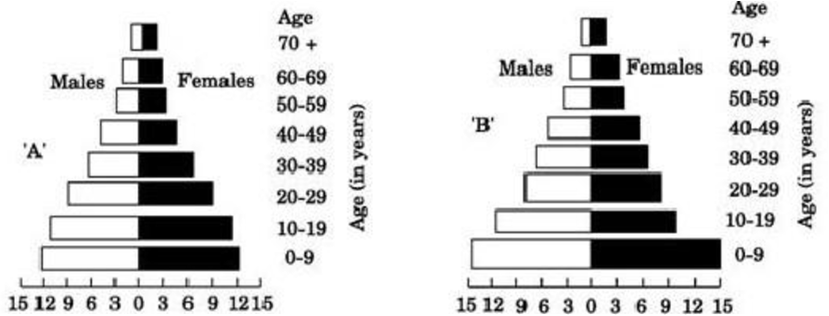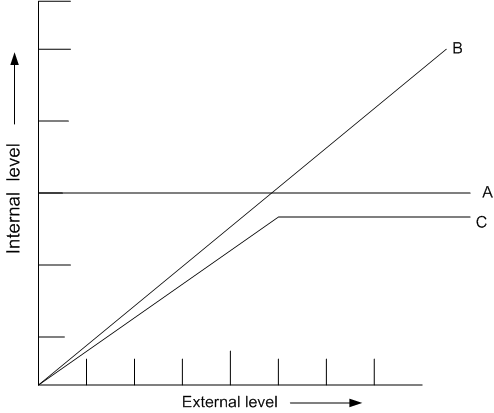A country with a high rate of population growth took measures to reduce it. The figure below shows age-sex pyramids of populations. A and B twenty years apart. Select the correct interpretation about them
Interpretations
'A' is more recent and shows slight reduction in the growth rate
'B' is earlier pyramid and shows stabilised
'B' is more recent showing that population is very young
'B' is more recent showing that population is very young
A.
'A' is more recent and shows slight reduction in the growth rate
Interpretation 'A' is correct for the given figures.
Some hyperthermophilic organisms that grow in highly acidic (pH2) habitats belongs to the two groups called
eubacteria and archaea
cyanobacteria and diatoms
protists and mosses
protists and mosses
A.
eubacteria and archaea
Thermophiles live in hot places, typically from 60o to 80oC. Many thermophiles (some eubacteria and archaebacteria) are autotrophs and have metabolisms based on sulphur. Some thermophilic archaebacteria form the basis of food webs around deep- sea thermal vents, where they must withstand extreme temperature and pressure. Archaebacteria can grow in highly acidic (pH = 0.7) and very basic (pH= 11) environments.
Which one of the following is most appropriately defined?
Host is an organism, which provides food to another organism
Amensalism is a relationship in which one species is benefited whereas the other is unaffected
Predator is an organism that catches and kills other organism for food
Predator is an organism that catches and kills other organism for food
C.
Predator is an organism that catches and kills other organism for food
The figure given below is a diagrammatic representation of the response of organisms to abiotic factors. What do A, B, and C represent respectively?
|
A
|
B
|
C
|
|
Conformer |
Regulator |
Partial regulator |
|
A |
B |
C |
|
Regulator |
Partial regulator |
Conformer |
|
A
|
B
|
C
|
|
Partial regulator |
regulator | conformer |
|
A
|
B
|
C
|
|
Partial regulator |
regulator | conformer |
D.
|
A
|
B
|
C
|
|
Partial regulator |
regulator | conformer |
a) Regulator - mammals and birds
b) Conformer - all plants and 99% animals
c) Partial regulators -
Which one of the following statemtents about morula in human is correct?
It has almost equal quantity of cytoplasm as an uncleaved zygote but much more DNA
It has far less cytoplasm as well as less DNA than in an uncleaved zygote
It has more or less equal quantity of cytoplasm and DNA as in uncleaved zygote
It has more or less equal quantity of cytoplasm and DNA as in uncleaved zygote
D.
It has more or less equal quantity of cytoplasm and DNA as in uncleaved zygote
Cleavage divisions are mitotic division, in which the single -celled zygote is converted into a multicellular morula. But during cleavage divisions, there is no growth of resultant daughter cells/blastomeres. So, the DNA content will increase, but there is no increase or insignificant increase in amount of protoplasm.
